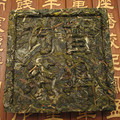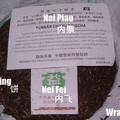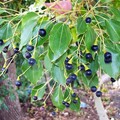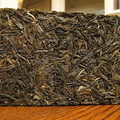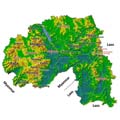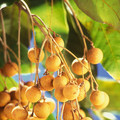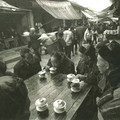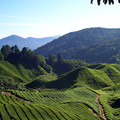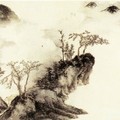Learning how to identify gu shu & make maocha - The Tea Urchin
„Mr. Gao showed us how to identify gu shu (ancient tree) tea leaves by looking at their texture, rubbing them between your fingers, and eating them raw. Old tea trees produce thicker, more leathery leaves that don’t easily come apart when you rub them. And gu shu buds should be white & shiny. When you chew them, the flavor is very bitter but there is also a strong sweet fragrance, and the juice is relatively easy to swallow. Tai di cha (terrace plantation tea) is also bitter but with a strong, lasting astringency on the sides & front of the tongue, and the juice is harder to swallow.“

Quotes Tags: Pu-erh, Gushu, Tea production, Experiencing tea
- Discussion: 0 comments
- Write a comment
Teas - Pu-erh
Lao ManE 2013 autumn
 1 review
1 reviewThe LaoManE rules over this autumn teas. In this village you may find really bitter tea...
BaDa 2013 - blind tasting set 1
 1 review
1 reviewthe pressed leaves aroma is strong and fruity, the taste is bitter, nutty, almond,...
Shu 7581 - 2002
 1 review
1 review„tailor-made” private production “Zhong Cha Gong Si” This tea was stored for...
Big Green Tree Yiwu 2001
 1 review
1 review„tailor-made” private production “Zhong Cha Gong Si” in Dayi (Menghai tea factory), so...
2006 Langhe TF Meng Hai Chitse Beeng Cha
 1 review
1 reviewThis is one of classic recipe from Langhe tea factory which is similar with 8542 from...
2007 Jingmai Qiao Mu “0502”
 1 review
1 reviewUse Jingmai mountain arbor (Qiao Mu) tea which picked before Grain Rain (mid-April) as...
Quotes - Pu-erh
„Pu-erh tea processing, although straightforward, is complicated by the fact that the tea itself falls into two distinct categories: the "raw" Sheng Cha and the "ripe" Shou Cha. All types of pu-erh tea are created from máochá (毛茶), a mostly unoxidized green tea processed from a "large leaf" variety of Camellia sinensis (C. sinensis assamica) found in the mountains of southern Yunnan.“
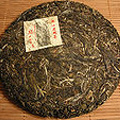
Quotes Tags: Pu-erh, Tea oxidation, Yunnan, Sheng - Raw Puerh, Shu - Ripe Puerh
Video - Pu-erh
Theme
Teas
2012 Autumn Fujian Anxi Benshan 100g
 2 reviews
2 reviewsOne of famous oolong teas from Anxi is Benshan. This is a light roasted with low oxidation (only 10-15%)...
2006 Langhe TF Meng Hai Chitse Beeng Cha
 1 review
1 reviewThis is one of classic recipe from Langhe tea factory which is similar with 8542 from Dayi. This tea is...
SeJak 2014 ECO Korea
 1 review
1 reviewKorean green tea picked in the spring of 2014 in Hadong district, Jiri mountains. Grown and produced by an...
Tea by region
We will help you with tea selection.
Do you like quality loose tea?
We will help you to find the right one for you. Be inspired by tea ratings of other tea lovers. Rating stars could help you.


Review your cup of tea.
Review the tea you are drinking and help other tea lovers to find the right cup of tea.






 Shops
Shops Share on Facebook
Share on Facebook






